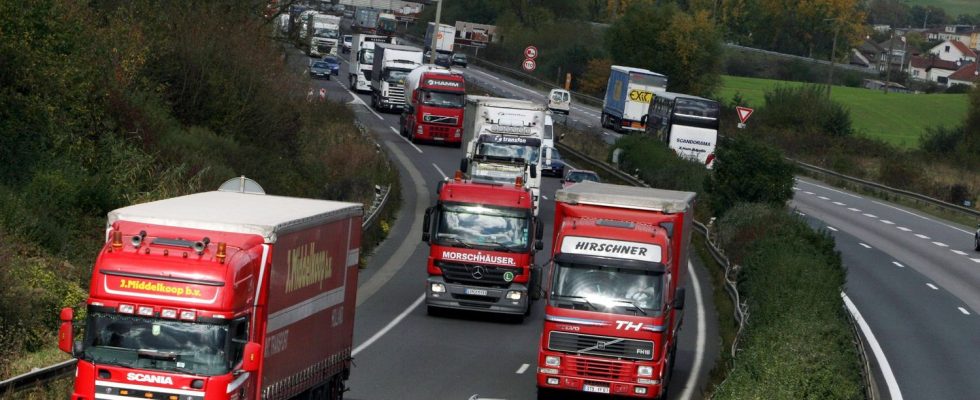The European Parliament and member states have agreed to oblige heavy-duty truck manufacturers to reduce CO2 emissions from new vehicles by 90% by 2040.
Published
Update
Reading time: 2 min

After cars, trucks and buses will also have to become clean. The European Parliament and Member States reached an agreement on Friday January 19 to reduce carbon emissions from heavy goods vehicles and generalize “zero-emission” buses (electric, hydrogen, etc.) in order to fight climate change. The European Union, which aims for carbon neutrality by 2050, had already approved the end of sales of new passenger cars with thermal engines in 2035. Here is what this text on trucks and buses, adopted in Brussels, contains.
What does this agreement provide?
From 2030, emissions from new trucks, those coming off production lines, will have to be reduced by at least 45% compared to 2019, puis lowered by 65% in 2035 and finally by 90% in 2040. Interurban buses, the coaches that we pass on the highway, will be subject to the same objectives.
For those traveling in the city, the transition will be much faster. The States have certainly been given a period of five years to adapt compared to what the European Commission initially wanted. But the objective remains ambitious: a 90% reduction in emissions in 2030 and 100% in 2035. This leaves 11 years for manufacturers to only offer buses specific to cities.
The agreement provides for exemptions for vehicles used in agriculture, military trucks and even fire trucks.
Is this a final agreement?
No, the text must still be formally validated and voted on by the representatives of the States on one side and the European Parliament on the other. And there are, according to our information, still certain technical points to be finalized. But overall, the decision has been made and the manufacturers’ roadmap is quite clear.
The issue is crucial for European climate objectives: trucks, buses and coaches generate more than 6% of EU greenhouse gas emissions, a quarter of road transport emissions. The shift towards electric or hydrogen is inevitable.
What path remains to be taken?
As far as France is concerned, the road is still long. “Today, we have 1% of new trucks sold in France which are electric”explain Louis-Pierre Geffray, mobility expert at the Mobilités en transition institute, a think tank dedicated to environmental transition. However, the objective of 90% by 2040 still seems realistic because “the manufacturers have anticipated the subject for five, seven, eight, ten years now, by preparing ranges which develop across all tonnages of heavy goods vehicles”.
“We are bringing clarity to one of Europe’s leading industries and a strong incentive to invest in electrification and hydrogen,” welcomed the European Parliament’s rapporteur on this text, the Dutchman Bas Eickhout, member of the Greens group.
Electric or hydrogen trucks? According to Louis-Pierre Geffray, in France, “For the moment, all investments are made mainly in the battery and this is what will cover the first regulatory milestones in 2030 and 2030.
